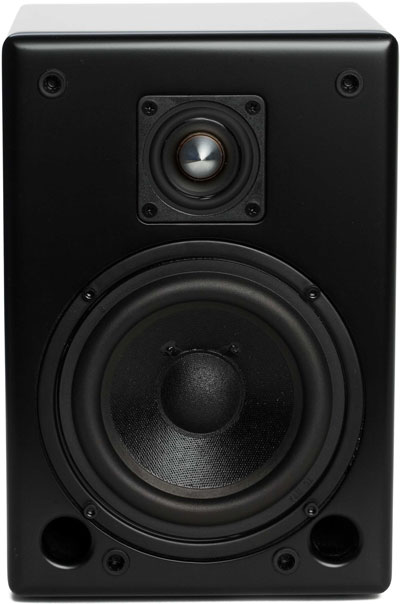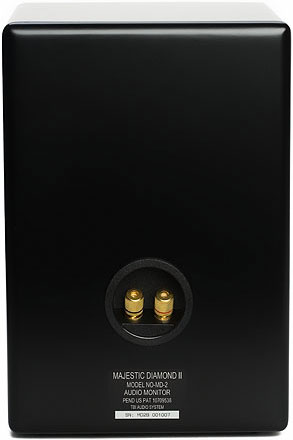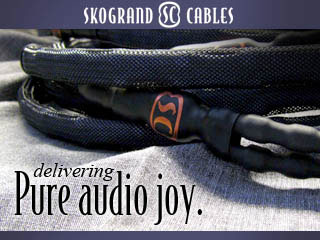
I therefore made a personal decision this year to make sure I give some time and attention to products that are offered for review that are within the realm of possibility in both quality and price for small starter systems.
As luck would have it, I was approached by Constantine Soo late last year to see if I would be interested in writing a series of reviews and articles that are specifically targeted to value-based high-end audio products. I agreed to do so appreciatively. So basically, ole’ Ray is going to practice what he preaches and offer a bit of insight as to what is out there and along the way, point out a few really special items that are great for dipping your toes into the high-end or high performance two-channel gene pool without needing to become a bank robber. Since that phone call from Constantine, I have received some very interesting items to look at and comment on.
The first of these items are the TBI Audio Systems “Majestic Diamond II” speakers. That is certainly quite a name for a diminutive mini monitor! I must confess that TBI Audio Systems was not a company that was known to me prior to this invitation to review. A quick glance at their website revealed that they indeed have a line of high quality, value-based “lifestyle” products which include speaker systems, active subwoofer systems, and small amplifiers. In speakers, the “Majestic Diamond II,” are at the top of a line which also includes the Majestic Diamond I and IR single-driver speakers.
The TBI “Majestic Diamond II” speakers are a vented ETL™ (transmission line) two-way, mini monitor speaker system. The driver complement and design configuration are atypical of a modern mini monitor; or at least, are certainly different from those I am familiar with. The TBI Majestic Diamond II’s sport a 5.25-inch paper-based woofer/midrange that is loaded by the dual-port ETL enclosure. To effect minimal phase shift, the woofer/midrange is crossed over to the tweeter module at 4,500 Hz via a very soft first-order slope. The tweeter module is also ETL loaded within the overall speaker box enclosure. The driver is a 2-inch PPM (paper-polymer mix) cone unit with an aluminum phase plug. With a rated response range of 200Hz to 20,000Hz, the tweeter is more than up to the task of blending in at the softly sloped crossover point of 4,500 Hz. All of this is housed in a very handsomely finished high gloss piano black rigid plywood cabinet.
I’m no stranger to quality and pricey (for their era) mini monitors. For many years I rolled through nothing but the small wonders of the time such as Chartwell’s LS3/5A, Dick Sequerra’s MET-7’s, the original Spica speakers, Celestion 3’s, and even the famed self-powered aluminum clad Braun Output Compact. Each was a fantastic example of near-full range holographic miracle for their time. At $1,500 the pair, the TBI Sound Majestic Diamond II’s are hardly what I would consider a pair of “starter” satellite speakers for entry level high performance 2-channel hi fi as originally envisioned. Instead, they come at a price where they would need to be today’s interpretation of any one of those previously mentioned classics. Keeping that in mind, I decided to first set-up the TBI Sound Majestic Diamond II’s in my main stereo using the lower portion of the Eficion F300’s as the perfect pedestal for them. After listening to a few tracks, I came to the conclusion that the speakers needed to be run in for a bit before any critical listening. With both drivers being cone pistons, I do not presume that I was getting anywhere near their optimal sound without the driver’s suspensions having had a bit of a work out. I ran them at a good volume for five days in my small system I use for these tasks.
A week later, I returned them to my main system and fired them up. Indeed the sound had substantially improved. The midrange dramatically opened up and the sound became quite spacious as is the hallmark of all good satellite systems. One thing I continued to note however was a notable absence of air and extreme high frequencies. At first I thought perhaps a tweeter unit was non-operational or damaged, but such was not the case. Referring back to the published specifications, I noted that indeed 22khz was the rated -5db point in the frequency response. With no actual published response graph available, I can only assume that the roll-off actually begins at a frequency well below that.
Since the speakers appear to have fairly narrow dispersion, I tried several placement techniques and found that placing them with the bass-mid drivers at ear level height and toeing them in rather dramatically to achieve on-axis placement with the listening position optimized the imaging, as well as their high frequency response.
Once comfortable that the speakers were adequately broken in, I sat and listened to several records and CD’s of different genres. I was pleased to note that the bass was tight, defined, and ample for the speaker’s diminutive footprint; representative of a properly executed transmission line type of design.
Imaging of the TBI, usually the hallmark of a well-executed mini monitor, was also quite good. The images were stable, properly sized, but yet a bit two-dimensional. This observation remained throughout the review period as I listened to various genres of music. I believe the main culprit to be the speaker’s lack of high frequency extension. The tweeter was clearly not up to the task of reproducing the detailed spatial cues that provide you with that sense of space. That said, the TBI Majestic II’s overall performance suffered largely due to the tweeter’s errors of omission.
Specific examples include female voices sounding a bit cardboard-like and lacking in clarity; a sound akin to listening to a lossy recorded MP3 or satellite radio versus an analog record or conventional CD. Percussion instruments, cymbals, wire brushes, chimes, etc. particularly suffered the lack of sparkle and life and came across rather as thwacks that lacked tonal richness.
Switching gears to rock music altered my perspective of these speakers. I feel that I had finally nailed their sense of purpose. The TBI Majestic Diamond II’s were much more comfortable belting out stuff like “Blitzkrieg Bop” from the Ramone’s first album or pumping out Keith Moon’s drums on “In the Rock” from The Who’s Quadrophenia. Indeed, these little speakers never lost their composure and were very comfortable rocking out to just about anything I threw at them. In fact, as a “bonus” due to the significant roll off in the high frequencies I mentioned above, the TBI Majestic Diamond II’s made really bad rock recordings or poor digital transfers much easier on the ears and enjoyable.
In Summary
In a price class such as the one occupied by the TBI Majestic Diamond II’s, there will always be compromise. The best a designer can do is to define the target audience and design a product, in this case a speaker that can best be appreciated by said audience. To me, it is abundantly clear that this very rugged, yet handsomely made, 2-way mini monitor can handle whatever you send to it, either in the form of MP3, CD, or internet radio. As such, the TBI Majestic Diamond II’s are ideal for a college dorm or bedroom environment. With the right material, they will fill a room with sound and you will enjoy it.
As for me, the search for affordable entry level high performance Hi Fi continues…
Manufacturer’s comment:
As manufacturer of the MD-2 we want to mention some of the main qualities of the MD-2 not mentioned by reviewer. This is a close monitor which means that the drivers integrate at a close distance and there is no fatigue at low or high volume at these distances as when used with a computer/studio monitor or where you just can’t sit far away. The speakers don’t compress the sound at higher volumes and can be placed closer to walls to support the bass extension. The highs are also better at these close listening distances where most multiway speakers integrate the tweeter at 1 meter. The drivers of the MD-2 integrate at a 12″ distance and will typically attenuate in the far field in a manner similar to a natural sound source.
It is generally best when toeing in as this typically presents a very wide and deep soundstage from many listening positions simulatneously without horizontal and vertical combing. We should have recommended the reviewer use without the grille for serious listening as the grille does cause the high frequencies to suffer somewhat for best highs and imaging. The pricing reflected in the review is for the black gloss model while the normal matte finish is priced at $997 the pair with the same performance. Thank you for your time and a great review.
Jan Plummer
TBI Audio System
- (Page 1 of 1)


